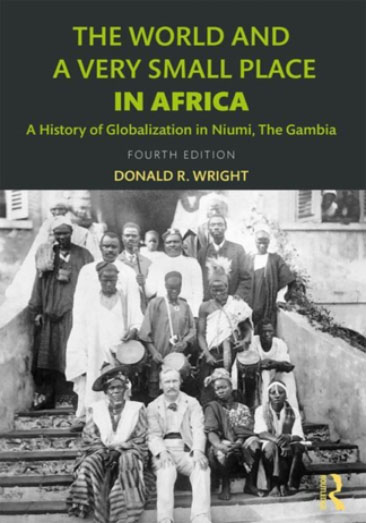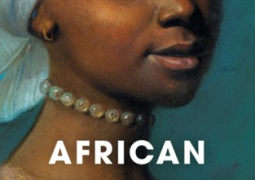
The proliferation in recent years of the concept of globalization in various academic disciplines has not left historians indifferent to the growing presentism that it conveys. In response, historians have underlined the historical roots of interactions and interconnections between various parts of the world that have only recently accelerated with the new means of communication. In the second edition of his 1997 book, Donald R. Wright makes these linkages more explicit in his framework of analysis by attempting to connect local history to global history. Using archival materials and oral history and borrowing concepts and categories from the “world-systems” theory of Immanuel Wallerstein and its variants (hence the title), he analyzes in eight chapters the process of incorporation of a small territory, Niumi (in Gambia), into the world economic system, or world political economy, from the fifteenth century. That process consisted of assigning to the region a specific economic role within a “world”-wide division of labor as a peanut producer (like Senegal), and establishing bureaucratic colonial state machinery.
The book is divided into four parts with two chapters each: background (prior to 1446), the precolonial period (1446-1816), the colonial period (1816-1965), and the postcolonial period (1965-2003). Each chapter shows how broader forces and events affected the lives of local people as well as the responses and initiatives of the inhabitants. Having an undergraduate audience in mind, the author provides, inserted in boxes in each chapter, specific topics, called “perspectives,” for discussion. These topics include, for example, a sale of slaves in Portugal, American policies and Niumi’s history, ethnicity, the death of Mansa Wali, women’s changing roles, and Alex Haley and Niumi’s history.
Wright shows that the incorporation of Niumi into the world system began with the spread of Islam and Mandinka political influences in the framework of the trans-Saharan trade, which strengthened the Niumi polity. With the arrival of the Portuguese in the middle of the fifteenth century, Niumi entered into the broader trade of the growing Atlantic complex, thanks to the activities of the Muslim traders (Torodbe and Mandinka or Jula), Christian Portuguese, and Luso-Africans, all of whom brought new ways of life to the area, including iron bars, new plants, and animals.
Wright revisits and dispels old myths and misconceptions about the participation of European and African societies in the Atlantic slave trade, the nature of precolonial African political systems, and the impact of the slave trade on local politics and society. But his interpretation of the facts is heavily influenced by the assumptions of rational choice theory. He insists that Niumi “residents dealt with Europeans from a position of strength through most of the period,” that “Niumi rulers determined much about how the cross-cultural exchange took place,” that “people in Niumi made rational decisions about trading one body of commodities for another,” and that shippers “wanting to obtain slaves or other commodities ... had to do so on Niumi’s terms” (pp. 89, 99). Despite this affirmation of strong African agency, Wright recognizes the depth and nature of Niumi’s dependence on the world market over the course of the eighteenth century with the dwindling of imported raw materials for productive use and the rise of consumer and nonproductive goods, including grain imports.
In his analysis of the colonial period (1816-1965, chapters 5 and 6), Wright focuses on the destruction of the Niumi state, the ending of slavery, its economic power base, and the incorporation into the British Empire as part of the Gambian colony and protectorate through gunboat diplomacy rather than negotiation. Niumi became “one of the areas of low-cost production for the expanding world economy” specializing in large-scale peanut production and exporting, and also attracting seasonal farmers from neighboring colonies (p. 126). One of the consequences of the imposition of monoculture was the deepening of Niumi’s dependence that led to a scarcity of foodstuffs (millet, sorghum, and rice), hunger, heavy reliance on imported rice from Burma, and poverty. The reader learns that the British colonial administration did little to improve the lives of Niumi residents in terms of education and medical treatment. “Not until 1951,” he writes, “would the government open a health center for Niumi residents in Essau” (p. 183). Like elsewhere in Senegambia, Islam spread among increasing numbers of Niumi’s residents during the colonial period. The rest of the story parallels developments in other colonies, where World War II and its consequences, including the rise of African nationalism, provided the catalyst for policy change that led to decolonization and independence in 1965.
In dealing with the postcolonial period, Wright tries to understand “why the optimism at independence has been so thoroughly dashed and why the outlook for the future looks so dim to so many living today in Niumi” (p. 208). Many factors account for the failure, including the Cold War and its consequences, global market forces, the oil crisis of the 1970s, leadership style, and poor policy choices. There is the promise of the development of tourism as a result of a chance encounter with Haley and Roots (1977), “which tied the region into the history of peoples of African descent across the Atlantic” (p. 225). The last chapter deals with the recent wave of globalization during the Second Republic, 1994-2003, and its economic, political, social, and cultural consequences, one of the consequences being the migration of young men mostly to the United Kingdom, Germany, the Netherlands, and the United States.
This is a well-written book that is enjoyable to read. Its major strength lies in the author’s effort to link local history to global history by showing how the peripheral region and people of Niumi have been influenced since the fifteenth century by world markets and foreign investors, and how the nature of the relationship between Niumi and the world economy has changed over time. Also the use of life history as a methodological device contributes to our understanding Niumi in the context of contemporary globalization.
But the book also shows the limits of any historical explanation based on the world system approach. As its critics have shown, the world system approach is profoundly functionalist and reductive in that it accounts for all changes in terms of the needs or dynamics of the larger world system.[1] Although Wright does a good job linking the rise of Gambian peanut production for export to the growing demand in Europe in the 1830s for peanuts, he is not able to successfully incorporate the perspectives and methodology of global history in his treatment of the road to independence (in chapter 6). According to the assumptions of the world system approach, Wright’s explanation of this phase of decolonization would have led him to expand on World War II and its consequences, the rise of the United States and the Soviet Union, the role of the United Nations as a platform for anticolonial activities, the example of Asia, the example of North Africa (for the rest of Africa), and their impact on the rise of Gambian nationalism. Doing so would have led to a loss of methodological control or would have made the reading tedious; but that is the price to pay when one adopts the world system approach. Wright focuses, instead, on the relationship between Gambian politicians and the leaders of the Gold Coast and Nigeria. In addition, this reader would have wanted to see more discussion of various forms of resistance to the demands of local and foreign capital, of the actions of Niumi’s war veterans who returned to their homes after fighting for the Allies overseas and who were on British officials’ watch list, and of the emergence of a peasantry in Niumi that was tied to the region’s integration within an international division of labor. What is clear is that the world system approach leaves little room to other aspects of people’s lives. But despite these methodological issues, this is a well-researched book that contributes to our understanding of Niumi in a larger context.
Available Timbooktoo at 4494345





